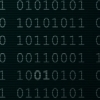Please help! I am trying to render a textured quad.
For the life of me, it retains black with a textured phong shader. In fact, when I use a phong shader, it stays black, even though its the same phong shader that renders all the models around said dastardly quad.
I'm hoping the code is quite explanatory so I'm just gonna walk through it and someone with a sharper eye than I can hunt for glory. Beware, there is a LOT of code - just looked and I feel bad.. however I do have to explain a couple of classes, FreeImage, and how it all works. I have quite a big project now.. it just doesn't yet do a lot because I don't have any textures. Just some 30-second -to-load .objs that are blue, and almost shiny.
I digress, the 'textured' quad gets made with the line below, which calls CreateQuad inline. It's gonna have some picture of some wood or something on it. It sits at 5,5,0 world space, and is 5x5 units in area.
m_HUD->Create( *ShapeFactory::CreateQuad( 5, 5, 5, 5, true),
"../Shaders/basic_phong.vs", "../Shaders/basic_phong.fs" );
Heres CreateQuad. (I post this so you can spot an error in it, but it ~should~ be pretty standard. It creates a quad. I hope.)
GeometryData* // Draw with GL_QUADS, centred on x, y
ShapeFactory::CreateQuad(int x, int y, int width, int height, bool textured)
{
GeometryData* shape = new GeometryData();
shape->SetTopology(7); // ..->SetTopology(GL_QUADS);
float x0, x1, y0, y1;
x0 = x + (width/2); x1 = x - (width/2);
y0 = y + (height/2); y1 = y - (height/2);
shape->numVertices = 4;
shape->m_Vertices = (Cream::Vertex3D*) calloc (4, sizeof(Cream::Vertex3D) );
shape->m_Vertices[0] = Vertex3D( x0, y1 , 0.0f );
shape->m_Vertices[1] = Vertex3D( x1, y1 , 0.0f );
shape->m_Vertices[2] = Vertex3D( x1, y0 , 0.0f );
shape->m_Vertices[3] = Vertex3D( x0, y0 , 0.0f );
shape->numNormals = 4;
shape->m_Normals = (Cream::Vertex3D*) calloc (4, sizeof(Cream::Vertex3D) );
shape->m_Normals[0] = Vertex3D( 0.0f, 0.0f , 1.0f );
shape->m_Normals[1] = Vertex3D( 0.0f, 0.0f , 1.0f );
shape->m_Normals[2] = Vertex3D( 0.0f, 0.0f , 1.0f );
shape->m_Normals[3] = Vertex3D( 0.0f, 0.0f , 1.0f );
if( textured )
{
shape->numUVs = 4;
shape->m_TexCoords = (Cream::Vertex2D*) calloc (4, sizeof(Cream::Vertex2D) );
shape->m_TexCoords[0] = Vertex2D(0.0f, 1.0f);
shape->m_TexCoords[1] = Vertex2D(1.0f, 1.0f);
shape->m_TexCoords[2] = Vertex2D(1.0f, 0.0f);
shape->m_TexCoords[3] = Vertex2D(0.0f, 0.0f);
}
shape->numIndices = 0;
return shape;
}
m_HUD is of type GLMesh. GLMesh::Create in short creates a VAO from that GeometryData, a Shader from those filenames, and holds a material - which contains uniforms I may want to set for the model; colour, gl texture id, texture name, etc. It has the Render method.
So, GLMesh::PreRender sets uniforms by talking to its GLShader, and it works like this: If the material says I'm textured, if it contains a texture ID for a diffuse map -- then I have a KdID, I set it. It also sets camera matrices. bOk is bOk, whether I use a texture or no, so the "1" is getting sent to map_kd in the shader.
if(material->isTextured)
{
if( material->KdID != 0 )
{ // both barrels and still nothing!
glActiveTexture(GL_TEXTURE1);
glBindTexture(GL_TEXTURE_2D, material->KdID );
bOk = bOk && m_Shader->SetUniformInt( 1, "map_kd" );
}
if( material->KaID != 0 )
{
//glActiveTexture(GL_TEXTURE2);
glBindTexture(GL_TEXTURE_2D, material->KaID );
bOk = bOk && m_Shader->SetUniformInt( 2, "map_ka" );
}
......
else
{ // always fires for non-textured shader, always works*
bOk = bOk && m_Shader->SetUniformVec4(glm::vec4(material->Kd.GLM(), 1.0), "m_Kd");
}
So that explains how the quad gets made and how it gets rendered, using texture unit or colour, the other data that it requires etc to exist in GL land. I'm pretty sure everything's good except setting the texture / sampler (I've said little of textures, I know).
I got FreeImage. It gives me bits, and I copy them, and keep them locally, then I let GL copy them and GL gives me a texture unit.
It gets convoluted though - as I said, I keep the texture locally and don't free them bits after I give them to OpenGL, because I want to play later - so I have a class for a texture, that lets me access those bits from FreeImage with GetPixel, SetPixel, Fill, etc, as if it were a 2D array. This I feel would be a handy thing to make heightmaps with, among other things.
So FreeImage gives me bits, FreeImage is disguised as ImageFactory.
The bits go to a GLBitmap Constructor ( .. bmp->GetPixel(x, y) ), along with width, height, and whether the bits need shuffling or not when they get copied.
The GLBitmap goes to a GLTexture, which takes the width and height and the bits and does the OpenGL stuff in GLTexture::Load.
Okay, so here's the constructor for GLBitmap - a Pixel is 4 bytes, a BYTE is an unsigned char. You knew that. So we cast the bits to Pixels and we know we have w * h of them. This could be a place where things have gone wrong though.
GLBitmap(int w, int h, bool bShuffle, BYTE* bits)
{
width = w;
height = h;
Pixel* src = (Pixel*)bits;
pixels = new Pixel[w*h];
for(int i = 0; i < w; ++i)
{
for(int j = 0 ; j < h; ++j)
{
const Pixel& p = src[(i * h) + j];
pixels[(i * h) + j] = (bShuffle) ? Pixel(p.B, p.G, p.R, p.A) : p ;
}
}
}
And finally our wrapper for an int, GLTexture, here's the Load method, that makes the actual OpenGL calls to generate a texture ID and set the bits to it.
bool GLTexture::Load( GLBitmap* bitmap )
{
glGenTextures( 1, &m_GLID );
glBindTexture( target, m_GLID );
glTexImage2D( target, 0, GL_RGBA, bitmap->Width(), bitmap->Height(),
0, GL_BGRA, GL_UNSIGNED_BYTE, bitmap->Data() );
for( auto i = params.begin(); i != params.end(); ++i )
glTexParameteri( target, i->first, i->second );
return (m_GLID!=0);
}And so, that explains, in SetMaterial, the workings behind Cream::LoadTexture()
if(mat->isTextured)
{
material->isTextured = true;
if(mat->mapKd.size() != 0) // if there is a filename
{
if(mat->KdID != 0) //if there is a gl/sl tex unit id
material->KdID = mat->KdID; //grab it
else
{
m_Textures[0] = Cream::LoadTexture( mat->mapKd ); // else load it
material->KdID = m_Textures[0].ID();
}
material->mapKd = mat->mapKd;
}
....
So where's my error.. Well I suspect a couple of things. I have a debug callback set, would it inform me of anything obvious?
- the glActiveTexture(GLTEXTURE0+n) calls - they're wrong - the wrong place, too often, wrong texture unit ?
- not sending the right value through to the sampler in the shader*, and no map is being sampled.. linked to above?
- the bits were mangled or the pointer lost by the time OpenGL gets to them in GLTexture::Load
As I say, the coloured phong shader and the textured phong shader are identical except for swapping a vec4 uniform for a sampler and a vec2 attribute, and getting the colour by sampling the texture.
Everything renders fine except the textured-not-coloured stuff.
Please find my error(s), I'll be around to let you know how much you helped! It was a long post.. apologies! A lot of code..
Thank you so, so much in advance! There's a lot I want to do with textures that I can't yet!
In fact, here's a screenshot of a mildly shiny blue cube, a white floor-grid, and a square black hole. I kid, it's that quad.







